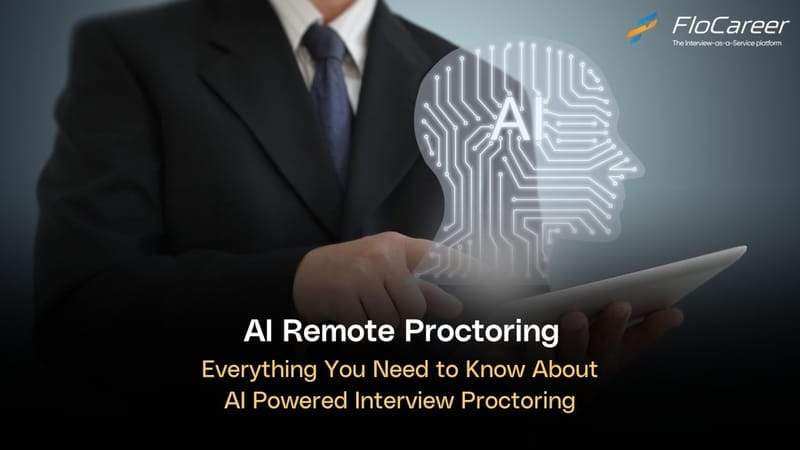As humans, we make hundreds of decisions every day, and our brains are wired to make these choices in the easiest way. As a result, our thoughts and values are constantly shaped by various unconscious biases which influence our perception of reality. These biases influence the hiring process as well.
In a perfect scenario, a candidate would be selected for a job objectively and judged solely on their abilities. However, this is not the case in the real world, where external factors often cloud our judgment.
A hiring bias occurs when an interviewer forms a snap judgment on an applicant for a job based on factors not relevant to the specific position. This bias can arise from a candidate’s resume picture, accent, or even their hometown.
Hiring bias can occur at any stage of the selection process. In the initial stages, it occurs when candidates are not shortlisted because of their gender, age, or race. Even if these characteristics are not stated directly, recruiters can make assumptions based on the applicant's name, work experience, or picture.
In the later stages, it can occur during interviews, whether it is a digital interview or in-person, based on a person’s voice or looks. Interviews may also be biased if they look for people from specific universities or colleges because either they or someone close to them did that and they’ve got a pre-set notion that those people are likely to work out better.
FloCareer’s interview structuring service helps reduce this bias by providing hiring managers with a focused and standardized set of questions to ask each interviewee.
If a recruiter has a pre-set notion about the ‘ideal’ candidate for a job, e.g., a younger white male or someone with a degree from a specific university, they could overlook other more suitable candidates for the role.
Whether consciously or subconsciously, there are many instances of bias during the hiring process. Biased hiring can create a homogenous organization that can hurt the company. According to Even Apfelbaum, Associate Professor of Work and Organization Studies at MIT Sloan School, racially homogeneous groups are less rigorous in their decision making and make more mistakes than diverse groups.
This article will help you understand the types of hiring bias, the problems that they can bring, and how to overcome them to set your company up for success.
Link: https://unsplash.com/photos/p74ndnYWRY4
What are the types of hiring bias?
There are several types of hiring bias, some of which may be more evident than others. A recruiter's bias can stem from many factors, including their upbringing, exposure to diversity, their social groups, and media influence.
The first step to tackling the hiring basis is learning to identify the different types. Here are the five most common types of biases:
Confirmation bias
Like everyone else, recruiters are quick to judge based on perceived truths. Confirmation bias occurs when you only pay attention to the information that confirms your beliefs and ignore all other factors.
A 2021 study by the University of Buffalo revealed that attractive people are more likely to get hired, receive better evaluations, and get paid more. This study is an example of the confirmation bias that people who are better looking are also more intelligent and capable: hiring managers would note the candidates’ physical appearance and make a positive assumption about their overall capabilities, ignoring any red flags.
This type of bias can also occur when a hiring manager or interview is overconfident about their ability to select the right candidate.
Expectation anchor bias
This form of bias occurs when a recruiter anchors themselves onto one piece of information about the application and uses it to make further decisions. Anchoring bias can lead to poor decisions and skewed perceptions. An example of this type of cognitive bias is when the first resume viewed by a hiring manager skews their perception of all subsequent applicants.
Similarity attraction bias
It is human nature to want to surround yourself with like-minded people, and this happens at the workplace as well.
In this type of bias, the recruiter is more likely to hire a candidate with similar characteristics- even when those factors are not relevant to the position.
Conformity bias
This type of cognitive bias is based on the Asch Conformity Experiment, where it was discovered that our choices are influenced by those of the group.
If one hiring manager has a different view about a candidate than the rest of the selection team, they are likely to conform with the majority and avoid being thought poorly of by their peers.
Status quo bias
Status quo bias is when you want everything to stay as it presently is and avoid change; it is a preference for the current state of affairs.
This type of bias can reduce diversity hiring, as if a man historically held a position, recruiters might be biased against a woman who is applying for the role. This bias can be found in all levels of leadership: in 2021, 86% of Fortune 500 CEOs were white men, creating a status quo bias against a woman assuming the position.
What problems can hiring bias cause?
Hiring bias can have a negative impact on an organization in several ways. First, hiring bias leads to a lack of diversity in the workspace, which is a moral issue and a practical one. To project themselves as thought-leaders, organizations must create a diverse and inclusive workplace, improve their reputation in today’s competitive market, and better represent their customer demographics.
Hiring the wrong employee leads to quick employee turnover, costing the company money- replacing an employee can cost up to six to nine months of their salary. Moreover, frequent employee turnover also decreases productivity and affects team morale.
Furthermore, having a biased hiring process can open your firm up to lawsuits. The US has many laws to prevent employment discrimination, including the Americans with Disabilities Act of 1990, the Rehabilitation Act of 1973, and the Equal Pay Act. In 2021, Google agreed to pay $3.8 million to settle allegations of systemic compensation and hiring discrimination at its California and Washington worksites.
How to overcome hiring bias?
Hiring bias in an organization cannot be fixed overnight, and firms must commit to constantly working to solve this problem. By following these steps, companies can start to decrease the bias in their employment process-
Redefine job descriptions
The words used to describe a role can attract different candidates, so it is essential to use standardized, gender-neutral, and role-specific keywords. Even subtle word choices can influence the candidate pool for a position. Using software to highlight stereotypically gendered words can make your description more inclusive.
Use a hiring marketplace
Job marketplaces let employers choose from a vast pool of candidates with differing expertise and characteristics. Online marketplaces encourage all candidates to apply and thus reduce intrinsic bias. Many marketplaces also use bias-free AI algorithms and assessments to match candidates with suitable jobs.
Reworking the interview process
Create a standardized interview guide and ensure hiring managers ask all candidates the same questions. Hiring managers can also use a scorecard to grade the interviewer’s responses using a pre-set scale.
These steps make the interview more objective and focused, reducing the potential for bias. FloCareer has over 3,000 qualified freelance interviewers and a 1,500,000 question bank to help you create an interview structure and reduce bias during the process.
Set diversity goals
By setting short-term and long-term goals for diversity and inclusivity in the workplace, you can encourage hiring managers to reduce their inherent biases and hire candidates of different ages, genders, and racial groups.
Link: https://unsplash.com/photos/vzfgh3RAPzM
Moving towards an inclusive and diverse workplace
5% of leaders in the field of human resources say diversity, equity, and inclusion are among their top five priorities for 2022. The best way to work towards an inclusive and diverse workspace is by reducing bias in the hiring process.
By providing your hiring team with training to help recognize and reduce biases and using digital tools like FloCareer to objectively filter resumes, conduct bot-based interviews, and create focused interview structures, you can reduce hiring bias in your company. FloCareer has conducted 300,000 interviews for over 150 clients, making it a reliable and efficient platform for improving your hiring framework.



